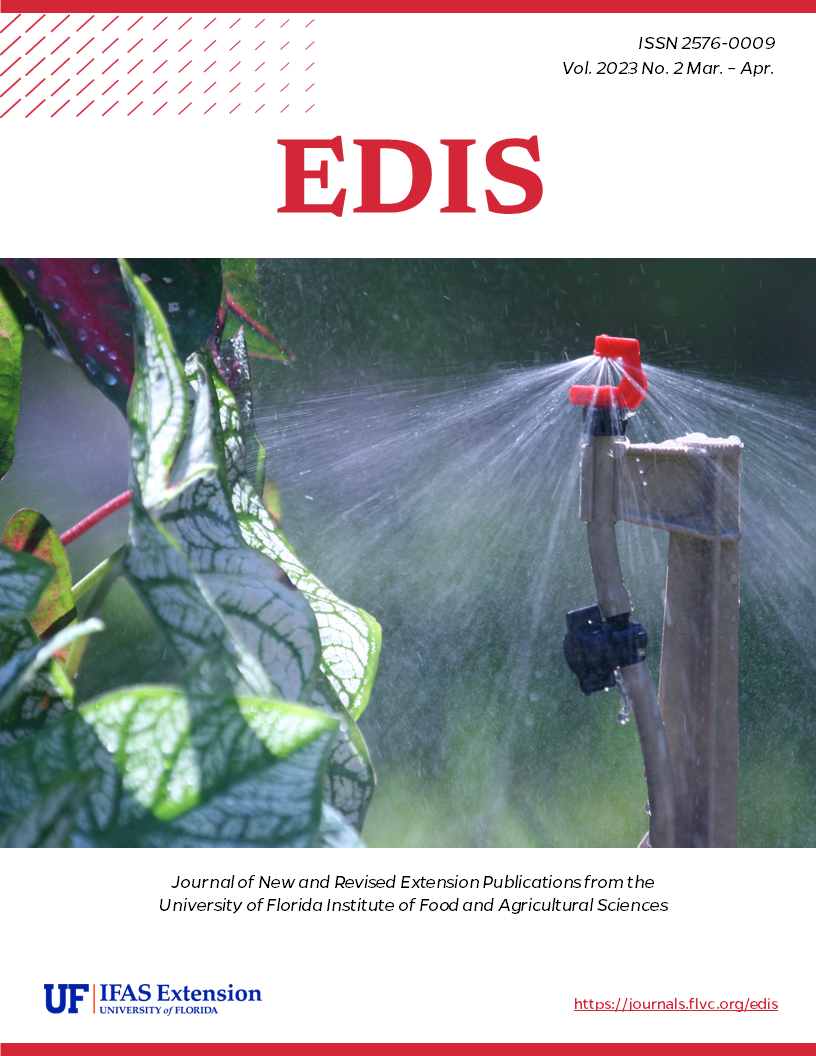Abstract
Recreational fishing is especially important to Florida’s economy and ecosystems. One of the most important metrics of recreational fisheries is “effort”—defined as the number of trips taken during a time and place. Effort is so important because it directly affects fish population sustainability, economic value and market activity. But what determines fishing effort? This publication describes the mechanisms that drive fishing effort. It specifically details the processes by which management actions can directly and indirectly affect fishing effort, and how feedbacks between these actions can change effort. The information in this document is critical for people involved with management decisions, like agency personnel and their stakeholders; those wanting to explain it to others, like extension agents; directly affected stakeholders like recreational fishers and guides; or simply the general public who want to know more about recreational fisheries in Florida.
References
Birdsong, M., L. M. Hunt, and R. Arlinghaus. 2021. “Recreational angler satisfaction: What drives it?” Fish and Fisheries. 22:682–706. https://doi.org/10.1111/faf.12545
Camp, E. V., R. N. M. Ahrens, M. S. Allen, and K. Lorenzen. 2016. “Relationships between Angling Effort and Fish Abundance in Recreational Marine Fisheries.” Fisheries Management and Ecology 23 (3–4), 264–275. https://doi.org/10.1111/fme.12168
Camp, E. V., R. N. M. Ahrens, C. Crandall, and K. Lorenzen. 2018. “Angler Travel Distances: Implications for Spatial Approaches to Marine Recreational Fisheries Governance.” Marine Policy 87:263–274. https://doi.org/10.1016/j.marpol.2017.10.003
Camp, E. V., A. B. Collins, R. N. Ahrens, and K. Lorenzen. 2020. “Fish Population Recruitment: What Recruitment Means and Why It Matters.” FA222. EDIS 2020 (2): 6. https://doi.org/10.32473/edis-fa222-2020
Camp, E. V., A. B. Collins, R. N. Ahrens, and K. Lorenzen. 2021. “Fish Population Recruitment 2: Stock Recruit Relationships and Why They Matter for Stock Assessment” FA234. EDIS 2021 (5). https://doi.org/10.32473/edis-fa234-2021
Chagaris, D., M. S. Allen, and E. V. Camp. 2019. “Modeling Temporal Closures in a Multispecies Recreational Fishery Reveals Tradeoffs Associated with Species Seasonality and Angler Effort Dynamics.” Fisheries Research 210:106–120. https://doi.org/10.1016/j.fishres.2018.10.018
Coggins Jr, L. G., M. J. Catalano, M. S. Allen, W. E. Pine III, and C. J. Walters. 2007. “Effects of Cryptic Mortality and the Hidden Costs of Using Length Limits in Fishery Management.” Fish and Fisheries 8 (3): 196–210. https://doi.org/10.1111/j.1467-2679.2007.00247.x
Hunt, L. M., E. V. Camp, B. van Poorten, and R. Arlinghaus. 2019. “Catch and Non-Catch-Related Determinants of where Anglers Fish: A Review of Three Decades of Site Choice Research in Recreational Fisheries.” Reviews in Fisheries Science & Aquaculture 27 (3): 261–286. https://doi.org/10.1080/23308249.2019.1583166
Jensen, O. P., T. A. Branch, and R. Hilborn. 2012. “Marine Fisheries as Ecological Experiments.” Theoretical Ecology. 5 (1): 3–22. https://doi.org/10.1007/s12080-011-0146-9
Love, G., A. Braswell, A. B. Collins, and E. V. Camp. 2022. “Ecological Influences on Coastal Finfish Recruitment.” FA239. EDIS 2022 (5). https://doi.org/10.32473/edis-fa239-2022
NOAA, National Marine Fisheries Service. 2017. “Fisheries Economics of the United States, 2015.” NOAA Tech. Memo. NMFS-F/SPO-170. U.S. Depart. of Commerce.
Ulman, A., and D. Pauly. 2016. “Making History Count: The Shifting Baselines of Turkish Fisheries.” Fisheries Research 183:74–79. https://doi.org/10.1016/j.fishres.2016.05.013
Ulman, A., and D. Pauly. 2016. “Making History Count: The Shifting Baselines of Turkish Fisheries.” Fisheries Research 183:74–79. https://doi.org/10.1016/j.fishres.2016.05.013

